In Our Candy Drawer: Dagashi
When we opened our candy drawer this time, we found classic Japanese soft candies that are fun examples of confections made from agricultural products closely connected to a region. The three soft candies we tried are all considered types of dagashi — inexpensive candy that is usually sold in an attractive package but pretty much designed for children. Even though dagashi isn’t presented in the same elegant form as other traditional Japanese confections like wagashi, we found the seemingly peculiar combinations of ingredients in the candies we tried to reflect Japanese tastes and history.
Take, for example, bontan ame. Commonly marketed outside of Japan as Botan Candy or just rice candy, this sweet’s main ingredients are sweetened rice and pomelo juice. In Japan, pomelos are called bontan. Pomelo is a type of citrus fruit that came to Japan from Southeast Asia in the 18th Century. Each piece of bontan ame is wrapped in oblaat, which is an edible, thin cellophane made of rice starch. Oblaat was introduced to Japan by Dutch 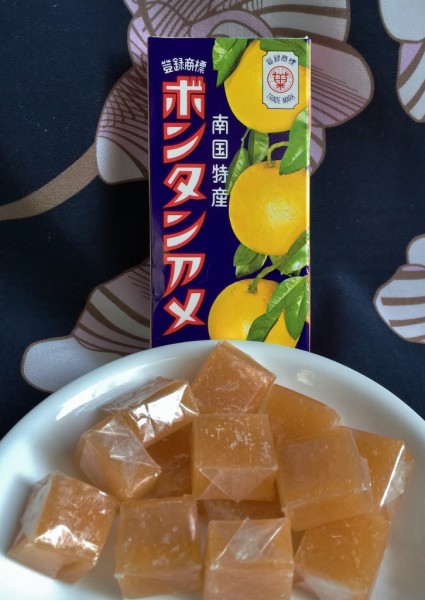 pharmaceutical companies in the late 19th Century to wrap bad tasting medicine so that it could be swallowed without tasting any bitter powder. Bontan ame isn’t wrapped in oblaat because it tastes bad; it’s wrapped in oblaat to keep the pieces of candy from sticking together. Bontan ame was first produced in the 1920s when many Japanese people were getting their first taste of Western foods and sweets. It was purposely designed to look and feel much like popular Western milk caramel but still be suited to Japanese tastes. So, in this one little candy, we have the elements of traditional Japanese mochi, a Southeast Asian fruit, Dutch pharmaceuticals, and Western European caramel. Bontan ame is a simple finished product but it takes us on a culinary journey through Japan’s history from an isolated kingdom through its Industrial Age.
pharmaceutical companies in the late 19th Century to wrap bad tasting medicine so that it could be swallowed without tasting any bitter powder. Bontan ame isn’t wrapped in oblaat because it tastes bad; it’s wrapped in oblaat to keep the pieces of candy from sticking together. Bontan ame was first produced in the 1920s when many Japanese people were getting their first taste of Western foods and sweets. It was purposely designed to look and feel much like popular Western milk caramel but still be suited to Japanese tastes. So, in this one little candy, we have the elements of traditional Japanese mochi, a Southeast Asian fruit, Dutch pharmaceuticals, and Western European caramel. Bontan ame is a simple finished product but it takes us on a culinary journey through Japan’s history from an isolated kingdom through its Industrial Age.
History lessons aside, what’s it like? Bontan ame is soft and chewy — not as chewy as American caramel but softer than a Starburst. The fruit flavor is a very light citrus. It tastes a bit like a tangerine. When you first pop it in your mouth, there is a split-second feeling that there is a stiff piece of plastic on your tongue because of the edible wrapper. That feeling lasts for no time at all and, in fact, it is a lot of the fun of eating the candy! After the wrapper melts away, you are left with a soft, smooth candy that is very slightly sweet.
The other two soft dagashi we tried are very much like the bontan ame in appearance and texture. Often, all candies made in this style are called rice candy in American stores even though they are not necessarily made with rice. We think this might be because we don’t really have a similar type of confection so the distributors and retailers just call it by a name we are likely to recognize.
The next candy, or ame, is called satsumaimo caramel or sweet potato caramel. It may sound strange to Western folks, but sweet potatoes are very popular treats in Japan and a lot of confections, like cakes and jellies, are made using them. Satsumaimo caramel is made from sweet potato paste, condensed milk, butter, and sugar. It tastes a lot like candied sweet potatoes — a dish popular in the American south that combines sweet potatoes or yams with sugar and cinnamon and, sometimes, marshmallows. It melts a lot like traditional caramel candies but it has a little more of a stringy texture. It is a rich, warm taste that we found to be delightfully sweet.
The last candy we tried is called Six Soldier Mochi. To our taste, this is the most unusual of the products. It looks like a green version of the bontan ame and satsumaimo caramel but it is stickier, chewier, and less sweet than the other two products. It also has the strongest taste of the three soft candies, with the taste of seaweed and green tea being very prominent. This unusual candy’s main ingredients are sweetened rice, beans, soybean flour, and powdered green tea and seaweed. Six Soldier Mochi packs all those traditional Japanese flavors into a 2cm square, and seems to be designed to appeal mostly to Japanese tastes. We couldn’t figure out why the candy is called “Six Soldier”, but it has intriguing packaging. If anybody knows the story of “Six Soldier”, please share it!
Each of the three daigashi we sampled are made in Japan by Seika Foods. There are 14 pieces of candy in each box, with each piece being a 2cm square that is 1cm thick.
Let us know if you’ve tried any of these special candies. And, if not, tell us what’s in your candy drawer.
Share:


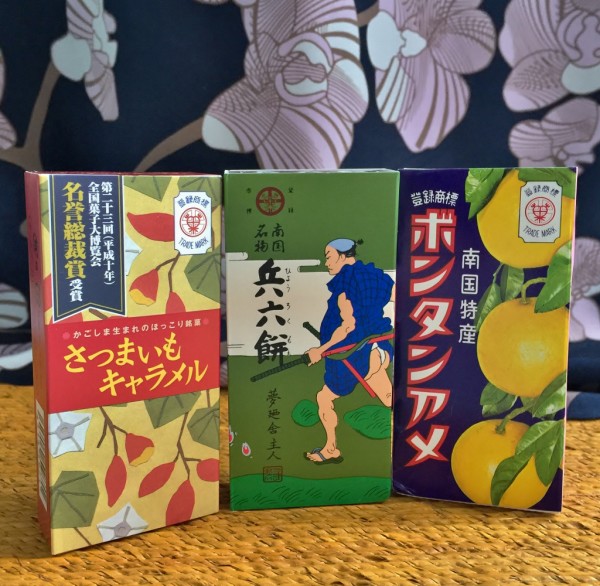
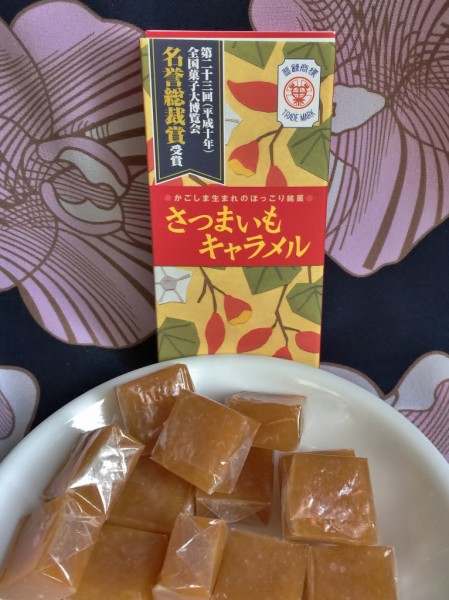
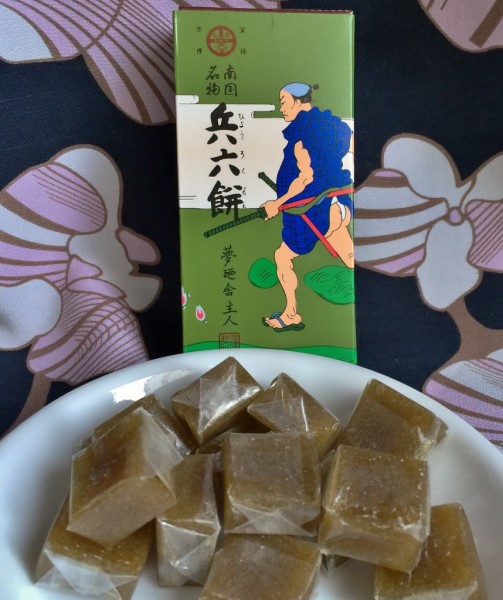
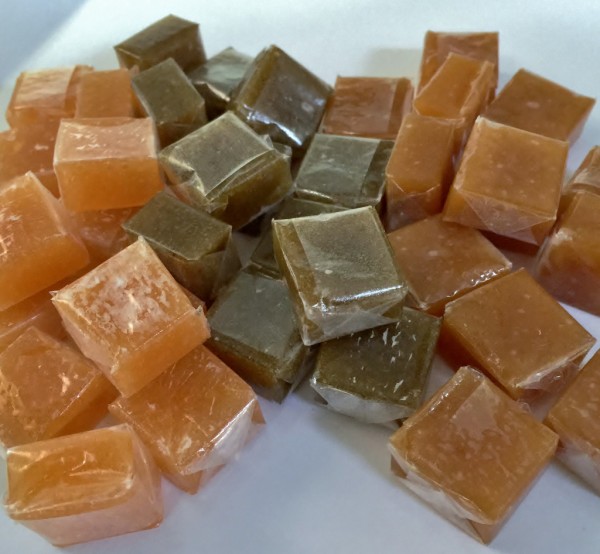



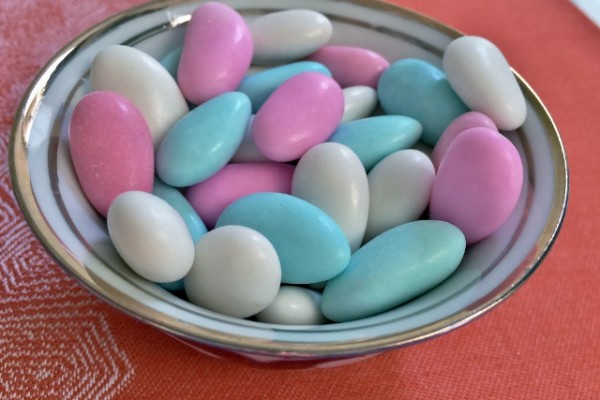
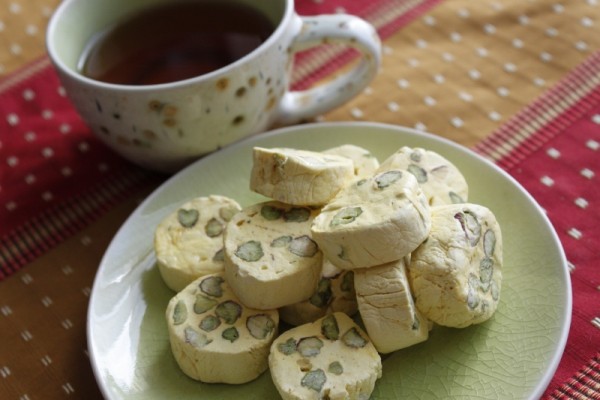
Comments
One Response to In Our Candy Drawer: Dagashi
Pingback: Emballages alimentaires : l'innovation est en marche. - Ristretto by Weave